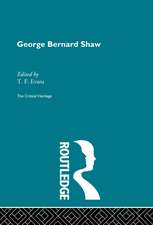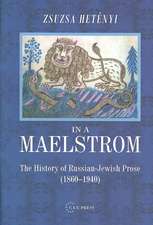Thomas Hardy's Tess of the d'Urbervilles: A Routledge Study Guide and Sourcebook: Routledge Guides to Literature
Editat de Scott McEathronen Limba Engleză Paperback – 18 feb 2005
- a contextual overview, a chronology and reprinted contemporary documents, including a selection of Hardy's poems
- an overview of the book's early reception and recent critical fortunes, as well as a wide range of reprinted extracts from critical works
- key passages from the novel, reprinted with editorial comment and cross-referenced within the volume to contextual and critical documents
- suggestions for further reading and a list of relevant web resources.
| Toate formatele și edițiile | Preț | Express |
|---|---|---|
| Paperback (1) | 172.16 lei 3-5 săpt. | +14.59 lei 7-13 zile |
| Routledge – 18 feb 2005 | 172.16 lei 3-5 săpt. | +14.59 lei 7-13 zile |
| Hardback (1) | 666.67 lei 6-8 săpt. | |
| Taylor & Francis – 22 feb 2005 | 666.67 lei 6-8 săpt. |
Din seria Routledge Guides to Literature
-
 Preț: 248.81 lei
Preț: 248.81 lei -
 Preț: 154.40 lei
Preț: 154.40 lei -
 Preț: 243.02 lei
Preț: 243.02 lei -
 Preț: 253.20 lei
Preț: 253.20 lei -
 Preț: 172.16 lei
Preț: 172.16 lei -
 Preț: 305.99 lei
Preț: 305.99 lei -
 Preț: 141.83 lei
Preț: 141.83 lei -
 Preț: 303.62 lei
Preț: 303.62 lei -
 Preț: 320.16 lei
Preț: 320.16 lei -
 Preț: 315.90 lei
Preț: 315.90 lei -
 Preț: 163.45 lei
Preț: 163.45 lei -
 Preț: 176.93 lei
Preț: 176.93 lei -
 Preț: 186.85 lei
Preț: 186.85 lei -
 Preț: 161.91 lei
Preț: 161.91 lei -
 Preț: 171.94 lei
Preț: 171.94 lei -
 Preț: 162.94 lei
Preț: 162.94 lei -
 Preț: 163.66 lei
Preț: 163.66 lei -
 Preț: 252.55 lei
Preț: 252.55 lei -
 Preț: 161.67 lei
Preț: 161.67 lei -
 Preț: 323.53 lei
Preț: 323.53 lei -
 Preț: 320.63 lei
Preț: 320.63 lei -
 Preț: 171.63 lei
Preț: 171.63 lei -
 Preț: 162.04 lei
Preț: 162.04 lei -
 Preț: 315.02 lei
Preț: 315.02 lei -
 Preț: 155.52 lei
Preț: 155.52 lei -
 Preț: 303.83 lei
Preț: 303.83 lei -
 Preț: 359.17 lei
Preț: 359.17 lei - 25%
 Preț: 484.16 lei
Preț: 484.16 lei -
 Preț: 189.55 lei
Preț: 189.55 lei - 18%
 Preț: 784.07 lei
Preț: 784.07 lei -
 Preț: 235.80 lei
Preț: 235.80 lei - 25%
 Preț: 485.36 lei
Preț: 485.36 lei - 18%
 Preț: 995.64 lei
Preț: 995.64 lei -
 Preț: 288.90 lei
Preț: 288.90 lei -
 Preț: 234.95 lei
Preț: 234.95 lei -
 Preț: 362.05 lei
Preț: 362.05 lei -
 Preț: 361.08 lei
Preț: 361.08 lei -
 Preț: 177.33 lei
Preț: 177.33 lei
Preț: 172.16 lei
Nou
Puncte Express: 258
Preț estimativ în valută:
32.94€ • 34.39$ • 27.26£
32.94€ • 34.39$ • 27.26£
Carte disponibilă
Livrare economică 15-29 martie
Livrare express 01-07 martie pentru 24.58 lei
Preluare comenzi: 021 569.72.76
Specificații
ISBN-13: 9780415255288
ISBN-10: 0415255287
Pagini: 212
Dimensiuni: 138 x 216 x 16 mm
Greutate: 0.38 kg
Ediția:1
Editura: Routledge
Colecția Routledge
Seria Routledge Guides to Literature
Locul publicării:Oxford, United Kingdom
ISBN-10: 0415255287
Pagini: 212
Dimensiuni: 138 x 216 x 16 mm
Greutate: 0.38 kg
Ediția:1
Editura: Routledge
Colecția Routledge
Seria Routledge Guides to Literature
Locul publicării:Oxford, United Kingdom
Public țintă
AS/A2 and UndergraduateCuprins
Introduction 1: Contexts, Contextual Overview, Chronology, Contemporary Documents Thomas Hardy, ‘Candour in English Fiction’ (1890) Thomas Hardy, excerpt ; From serialized version of Tess of the d’Urbervilles (1891) Thomas Hardy, Selection of Poems Tess’s Lament We Field-Women The Well-Beloved The Ruined Maid At a Hasty Wedding A Hurried Meeting The Turnip-Hoer Winter in Durnover Field Doom and She The Lacking Sense Richard Jeffries, ‘The Labourer’s Daily Life’, Fraser’s Magazine (1874) Richard Jeffries, ‘Field-Faring Women’, Fraser’s Magazine (1875) Anon., ‘The Virgin Forest [of Brazil]’, Bentley’s Miscellany (1864) James Fergusson, ‘Stonehenge’, Quarterly Review (1860) 2: Interpretations Critical History Early Critical Reception; From Clementina Black, Illustrated London News (1892); From Anon., Athenaeum (1892); From R. H. Hutton, Spectator (1892); From Margaret Oliphant, Blackwood’s Magazine (1892); From Mowbray Morris, ‘Culture and Anarchy’, Quarterly Review (1892) Modern Criticism The Character of Tess; From Irving Howe, Thomas Hardy (1967); From Michael Millgate, Thomas Hardy: His Career as a Novelist (1971); From Penelope Vigar, The Novels of Thomas Hardy: Illusion and Reality (1974); From Mary Jacobus, ‘Tess’s Purity’, Essays in Criticism (1976); From John Bayley, An Essay on Hardy (1978); From Janet Freeman, ‘Ways of Looking at Tess’, Studies in Philology (1982); From Simon Gatrell, Thomas Hardy and the Proper Study of Mankind (1993); From Peter Widdowson, ‘ “Moments of Vision”: Postmodernising Tess of the d’Urbervilles’ (1994) Hardy’s Philosophical Views; From Dorothy Van Ghent, The English Novel: Form and Function (1953); From Tony Tanner, ‘Colour and Movement in Hardy’s Tess of the d’Urbervilles’ (1968); From F. B. Pinion, Hardy the Writer (1990) Tess and Sexuality; From Penny Boumelha, Thomas Hardy and Women: Sexual Ideology and Narrative Form (1982); From Kristin Brady, ‘Tess and Alec: Rape or Seduction?’ (1986); From James Kincaid, ‘ “You did not come”: Absence, Death and Eroticism in Tess’ (1990); From William A. Davis, Jr, ‘The Rape of Tess: Hardy, English Law, and the Case for Sexual Assault’ (1997); From Lisa Sternlieb, ‘ “Three Leahs to Get One Rachel”: Redundant Women in Tess of the d’Urbervilles’ (2000) Hardy on Nature and Society; From David Lodge, The Language of Fiction: Essays in Criticism and Verbal Analysis of the English Novel (1967); From Merryn Williams, Thomas Hardy and Rural England (1972); From Ian Gregor, The Great Web: The Form of Hardy’s Major Fiction (1974); From Bruce Johnson, ‘ “The Perfection of Species” and Hardy’s Tess’ (1977); From Adam Gussow, ‘Dreaming Holmberry-Lipped Tess: Aboriginal Reverie and Spectatorial Desire in Tess of the d’Urbervilles’ (2000) The Work in Performance 3: Key Passages Introduction Key Passages ; From ‘Phase the First: The Maiden’; From Chapter 2: The Village of Marlott, and the May-Day Dance; From Chapter 2: An Early Description of Tess; From Chapter 4: The Death of Prince; From Chapter 5: Discussion of the d’Urberville Lineage; Tess Meets Alec d’Urberville ; From Chapter 11: The Journey through The Chase, and Tess’s Rape; From ‘Phase the Second: Maiden No More’; From Chapter 14: The Midnight Baptism and the Burial of Sorrow; From ‘Phase the Third: The Rally’; From Chapter 18: Introduction of Angel Clare; From Chapter 19: Tess and Angel in the Garden Chapter 20: The Pastoral Interlude at Talbothays; From ‘Phase the Fourth: The Consequence’; From Chapter 34: Angel Confesses his Past; From ‘Phase the Fifth: The Woman Pays’; From Chapter 35: Angel’s Immediate Reaction to Tess’s Confession; From Chapter 42: Initial Description of Flintcomb-Ash Farm ; From ‘Phase the Sixth: The Convert’ Chapter 47: Threshing Scene; Renewal of Alec d’Urberville’s Attentions to Tess; ; From ‘Phase the Seventh: Fulfilment’; From Chapter 55: Description of Sandbourne; From Chapter 55: Angel Presents Himself to Tess ; From Chapter 56: Tess’s Murder of Alec; From Chapters 57 and 58: The Idyll at the Deserted Mansion; From Chapter 58: Tess and Angel at Stonehenge; From Chapter 59: Tess’s Fate, and the Novel’s Closing Paragraphs 4: Further Reading
Notă biografică
Scott McEathron is Associate Professor of English at Southern Illinois University, Carbondale.
Descriere
This wide-ranging introduction to Hardy's novel provides chronology, contextual overview with reprinted contextual documents, critical overview from publication to the present, annotated key passages and suggestions for further reading.





















